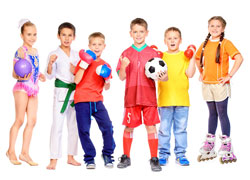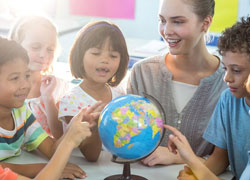Types of Abuse
There are many different kinds of abuse, and many reasons why people may harm or neglect children.
The signs of abuse can sometimes be difficult to spot, but individuals and communities can play a big part to keep children safe. You can help protect children by keeping your eyes and ears open, by being alert to signs that all is not well, and by acting on any concerns you might have.
If you are worried about a child’s welfare you can call your local council’s social work department or the police on 101.
If you think a child might be in immediate danger you should contact the police right away by dialling 999.
Is when the basic needs of the child are not being met, these include love, safety, affection, food, warmth, and shelter.
- Neglect is one of the most widespread forms of child abuse.
- Too many children in live with neglect on a daily basis, and neglect can have damaging consequences for a child throughout his or her whole life.
- Neglect happens when the basic needs of a child are not being met on a regular basis. Those needs include love, safety, affection, food, warmth, and shelter. One-off incidents like a child forgetting money for school dinners don’t necessarily indicate neglect. However, persistent, and on-going signs of neglect might include a child being constantly hungry, poorly or inadequately dressed, or unwashed. A child who is being neglected might be seen out and about at all times of day and night, or who is always alone.
- Other signs of neglect might include health appointments being missed which can impact on a child’s development. Neglected children may not gain weight or grow as expected and have problems with social skills and learning.
- Older children who are neglected might behave in ways which indicate that they’re in distress. They might go missing and become vulnerable to exploitation or take risks by using drugs and alcohol or get involved with criminal behaviour. Their relationships with friends might be difficult and they may also be subjected to bullying and ridicule.
- If you’re worried that a child is being neglected, it’s always better to say something than do nothing – see our Get Help section for sources of help and advice.

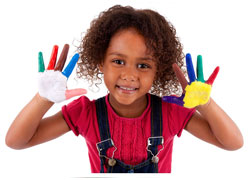
Is when a child is deliberately hurt or injured by another person.
- Physical abuse is when a child is deliberately hurt or injured by another person.
- Physical abuse can be a one-off severe incident or may happen repeatedly. Sometimes there can be obvious signs of physical abuse but sometimes it can be hidden. You might see someone hitting, kicking, shaking, or otherwise assaulting a child or you may see a child with unexplained injuries such as bruising, burns or bite marks. A child may tell you that they have been hurt or injured or appear afraid to go home.
- All children can injure themselves accidentally, especially young children, but if you already have concerns about a child, a new injury might mean they need help. For example, you might notice that a child has an obvious injury such as a limp or a sore arm which they deny or that they try to explain in a way which doesn’t seem to make sense. Equally, you may not have had previous concerns about a child but if the nature of an injury or a series of minor injuries has caused you to be concerned, you should seek help.
- Physical abuse of children is never acceptable for any reason.
Child sexual abuse is when a child is forced or persuaded into sexual activity.
- Child sexual abuse is when a child is forced or persuaded into sexual activity.
- Child sexual abuse can happen to children of all ages, from babies to teenagers. Sexual abuse of children can happen in person, online, or both.
- Children and young people who are being sexually abused sometimes express distress through behaviours such as anger, running away and feel bad about themselves. You might notice a child acting in a sexually inappropriate way or using sexual language that you would not expect for their age. A child may appear afraid of being alone with a particular person or might become secretive and withdrawn or emotionally distressed.
- A child who is being sexually abused may also change their usual behaviour suddenly, they may appear sad and unhappy when before they had a happy school life and strong friendships. Older children may develop mental health problems, eating disorders and use drugs and alcohol as a way to manage their distress.
- Children often feel responsible and can be persuaded by an abuser that what’s happening is all their own fault. However, child sexual abuse is only ever the fault of the abuser, it’s never the fault of the child.
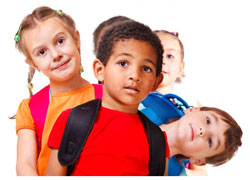

Is when a child’s confidence and self-esteem is repeatedly damaged.
- Emotional abuse is when a child’s confidence and self-esteem is repeatedly damaged.
Examples of emotional abuse can include humiliation, being ignored, made to feel worthless, or being exposed to situations that can cause fear and distress.
- Emotional abuse can happen on its own, but it’s always present alongside other forms abuse. Signs of emotional abuse can be hard to spot but it’s every bit as damaging as other forms of abuse.
- Children and young people who are being emotionally abused might appear afraid of someone or be worried that they might displease them in some way. They may lack confidence and talk about themselves in a negative way. Others may appear unemotional and seem quiet and withdrawn.
- A child experiencing emotional abuse might find it difficult to manage their own emotions, becoming angry or upset easily and then having difficulty calming down. They may also find it difficult to make friendships or keep them going and struggle to trust adults in their lives.
Can take many forms but can include sexual exploitation, grooming, communicating with children for a sexual purpose and can include sexting and cyberbullying.
- Online child abuse takes many forms but can include sexual exploitation, grooming, communicating with children for a sexual purpose, but also includes sexting and cyberbullying.
- Children and young people should be able to enjoy the benefits of the online world without fear of being abused or exploited. They should also feel empowered to recognise and avoid potential risks.
- Signs that a child or young person is experiencing online abuse might include noticing that they are spending lots of time online or that there is a sudden change, and they are online a lot less than normal. They might become secretive about what they are doing and who they are talking to online.
- Children and young people might have lots of new numbers, email addresses and more messages than normal. As with other forms of abuse you might become aware of a change in their behaviour and they may seem distracted, worried or upset.
- Parents and carers need an awareness of what children and young people are doing online, who they are speaking to and what platforms they use. We all want to be confident that our children are safe online, and it’s okay to be curious and ask them questions about what they’re doing online.
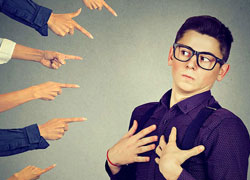
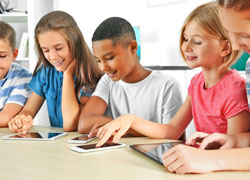
Is a form of sexual abuse and happens through control, coercion, force, enticement and bribery.
- Child sexual exploitation is a form of child sexual abuse.
- Child sexual exploitation happens through control, coercion, force, enticement and bribery – it never happens through choice. Young people as well as adults can commit child sexual exploitation.
Child sexual exploitation can affect girls and boys of any age, including 16 and 17 year olds. It can happen indoors, outdoors and online, and in any community including remote areas and villages, as well as towns and cities.
- If a child or young person is being sexual exploited they may become more secretive, go missing for long periods of time, including overnight and take time out of school. They may appear to have money and new items which there is no explanation for. They may be using drugs and alcohol and suddenly have a new group of friends or an older boyfriend or girlfriend.
- It’s important to understand that child sexual exploitation might not always feel harmful to a child or young person, but it has a damaging impact on the child or young person themselves, and on those around them.
Female genital mutilation (FGM) is the partial or total removal of external female genitalia for non-medical reasons. It’s also known as female circumcision, cutting or sunna.
- Religious, social or cultural reasons are sometimes given for FGM. However, FGM is child abuse. It’s dangerous and a criminal offence.
- There are no medical reasons to carry out FGM. It doesn’t enhance fertility and it doesn’t make childbirth safer. It is used to control female sexuality and can cause severe and long-lasting damage to physical and emotional health.
Domestic abuse is any type of controlling, bullying, threatening or violent behaviour between people in a relationship. But it isn’t just physical violence – domestic abuse includes any emotional, physical, sexual, financial, or psychological abuse.
- It can happen in any relationship, and even after the relationship has ended. Both men and women can be abused or abusers.
- Persistently witnessing domestic abuse can be a form of child abuse, and teenagers can suffer domestic abuse in their relationships. Domestic abuse can seriously harm children and young people.
- The UK Government defines domestic abuse as:
“Any incident or pattern of incidents of controlling, coercive or threatening behaviour, violence or abuse between those aged 16 or over who are or have been intimate partners or family members regardless of gender or sexuality”.






